News
Multiple factors contribute to rising road traffic deaths
View(s):By Minaza Hassan
Despite several efforts over the years to minimise traffic accidents, the results have been poor, with the death toll and the number of injured on the rise.
“The annual average number of patients in Sri Lanka due to road traffic accidents is 44,000, while the deaths due to injuries from road traffic accidents are around 3,200 annually,’’ said Amali Rambukwella, a Health Ministry official.
According to the Sri Lanka Traffic Police, the number of fatal road traffic accidents this year up to June was 930.
A culture of competing and racing against one another among bus drivers is prevalent in Sri Lanka. Public transport bus drivers are responsible for the safety of passengers. Reckless driving and driving under the influence of intoxicants are some of the notable issues, pointed out Dr Clifford Perera of the University of Ruhuna.
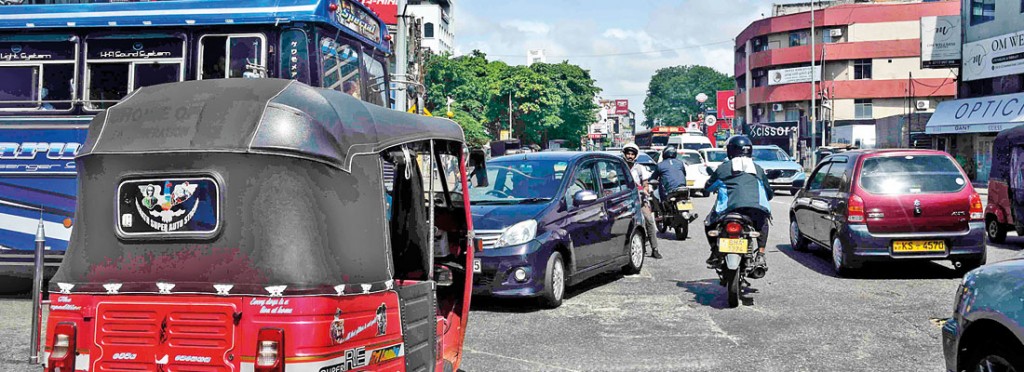
Everybody's Road: Lankans don't heed road rules Pix by Akila Jayawardena
“Everybody is a road user; we are all pedestrians, passengers, or drivers in our daily lives. We have the right to use the roads safely and not get injured,’’ Dr Perera said. However, we have the shared right and responsibility to uphold road rules. Lankan road culture is an important element in decreasing motor traffic offences, he said.
According to a pilot drug test among bus drivers done by the Police at the end of June this year, it was found that close to 100 bus drivers out of 1,781 in the Western Province were drug users.
The Motor Traffic Act of Sri Lanka (1979) identifies any individual causing death or injury to persons by driving motor vehicles after the consumption of intoxicants as guilty of a grievous offence. They may be liable to a fine of not less than Rs 5,000, a term of imprisonment not exceeding five years, or both, and the cancellation of their driving licences.
However, the Sri Lankan courts have taken a more exceptional and extreme stance on a particular road traffic accident in the past, noted Dr. Clifford in reference to the accident that occurred at the Yangalmodara crossing where a bus and a train collided, claiming the lives of 40 people in 2005. The driver and conductor faced 152 charges and were sentenced to death by the Kurunegala High Court in 2013.
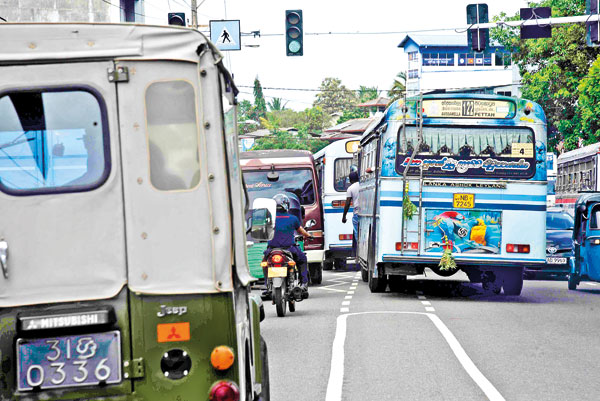
In this instance, The Motor Traffic Act was not applied. The judgement was decided according to the Penal Code, Section 294, which mentions committing an act knowing that it is so “imminently dangerous that it must in all probability cause death” as an offence.
A statue sits at the Yangalmodara crossing today as a mark of the gravity of the incident. Despite the severity of the incident and the judgement by the Kurunegala High Court in 2013, fatal road traffic accidents are still the norm in Sri Lanka.
There are various causes that may lead to the increase in motor traffic accidents; however, the normalisation of a general disregard for road rules can be viewed as a notable contributory cause, said Dr Perera, who authored an article on the Legal Aspects of Motor Traffic Trauma in Sri Lanka.
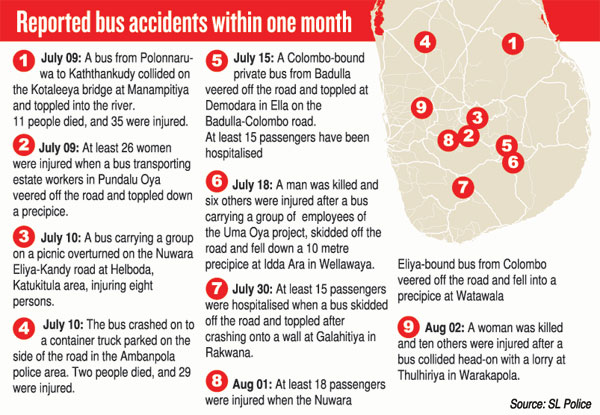
Dr Clifford said the application, implementation, and practice of road rules are necessary factors in maintaining order on the road. This does not happen in Sri Lanka, and the law is not applied across the board, he said. Police are unable to enforce the law most of the time as there is corruption.
From a psychological perspective, deterrence is an important element in ensuring rules are followed. The public has to develop knowledge of road rules, and we must develop a culture of reporting traffic offences to authorities, said neurologist T Thivakaran.
The demerit point system would be a good initiative so that minor offences are also taken more seriously, said Dr Thivakaran.
According to Motor Traffic Commissioner General Nishantha Weerasingha, arrangements are underway to implement a demerit point system.
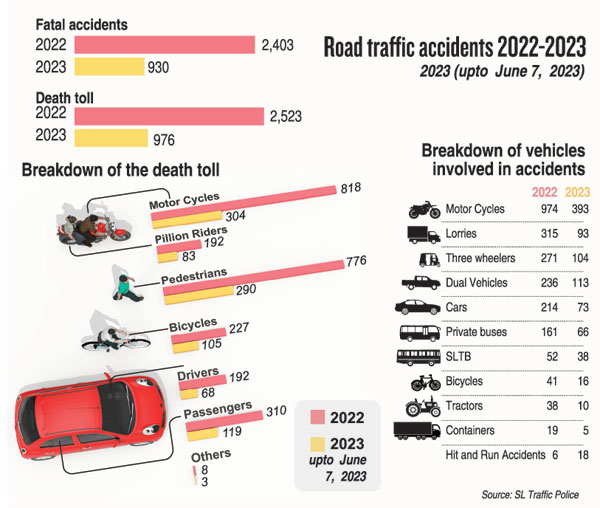
Under the current legal system, when a driver commits an offence, he or she walks away after paying a fine and does not face serious consequences. They are likely to commit the same offence again. Under a demerit point system, each time an offence is committed, there is an imminent threat that the driver’s licence will be suspended. This deters the driver from committing the offence again, Mr Weerasingha said.
Underdeveloped road structures that contribute to traffic congestion can contribute to motor vehicle accidents as well, said Dr T Sivakumar, senior lecturer, Department of Transport Management and Logistics Engineering. Traffic congestion occurs when a road has reached its capacity and there are more vehicles on the road than its manageable limit, he said.
If a city is well planned and hospitals, schools, and shopping centres are built in a more accessible manner for each city, then perhaps the need for a lot of people to travel would decrease, and thereby the number of vehicles on the road would drop as well, explained Dr Sivakumar. A lack of proper infrastructure and underdeveloped roads are notably contributory, he said.
While acknowledging that there are certain road safety issues, Road Development Authority Director General V S Weerakoon said budgets are limited and, therefore, road maintenance is restricted.
To mitigate budgetary issues and traffic congestion, Sri Lanka may adopt concepts such as ride-sharing, “carpooling,” or “vanpooling, Dr Sivakumar said.
However, Sri Lankans would not need to resort to these if the public transport system was more functional, he said.
Speeding is a serious issue; driver training programmes are currently underway, and buses will be put on a schedule, noted the chairman of the Sri Lanka Transport Board, Shashi Welgama.
| Accidents have claimed 976 lives so far this year Sri Lanka is witnessing a rise in road traffic accidents, with over a dozen accidents this week. Several accidents were critical and involved multiple victims. In one of the most recent road traffic accidents, a public transport bus belonging to the Kataragama depot and a cab travelling from Okkampitiya towards Monaragala collided head-on on the Monaragala-Wellawaya road. The driver of the cab, W A Udaya Kumara, suffered severe injuries, Monaragala Police said. Mr Kumara is warded at the Monaragala District General Hospital. Traffic officer Janaka Ratnasiri is conducting investigations under the instructions of sub-inspector Namal. 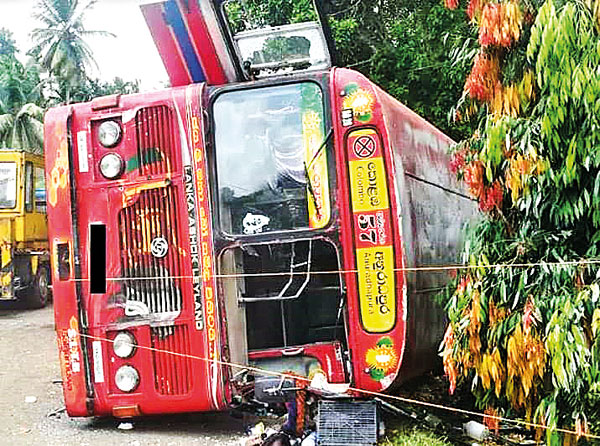 Thulhiriya accident Pix by Januur Kichilan The death toll due to road traffic accidents this year stands at 976, with 290 being pedestrians, 304 motorcyclists, 83 pillion riders, 105 bicycle riders, 68 drivers, 119 passengers, and 7 others, Sri Lanka Traffic Police said. Records show over 930 fatal accidents have taken place so far, and 393 of them involved motorbikes, while 113 involved dual vehicles, 104 three-wheelers, 93 lorries, 73 cars, 66 private buses, 38 public buses, 16 bicycles, 10 tractors, 5 containers, and one land vehicle. 18 were “hit-and-run” accidents. | |
The best way to say that you found the home of your dreams is by finding it on Hitad.lk. We have listings for apartments for sale or rent in Sri Lanka, no matter what locale you're looking for! Whether you live in Colombo, Galle, Kandy, Matara, Jaffna and more - we've got them all!

